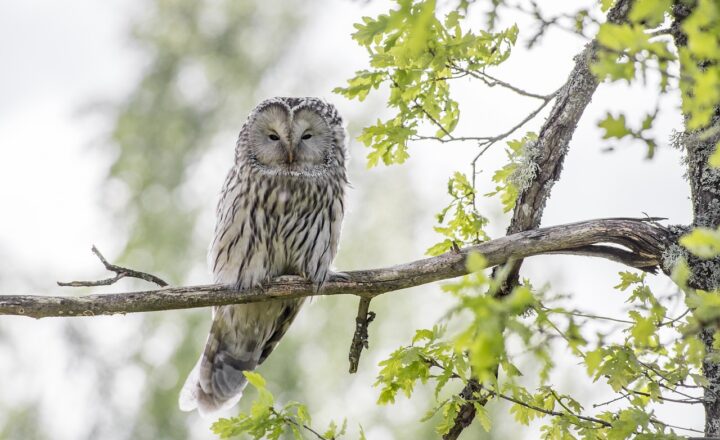Wildlife Wonders: The Most Extraordinary Creatures You’ve Never Heard Of
November 18, 2024

The natural world is teeming with life, and while many of us are familiar with the magnificent lions of the savanna and the majestic blue whales of the ocean, countless extraordinary creatures remain unrecognized. In this article, we delve into the hidden gems of the animal kingdom—those remarkable species that often go unnoticed. Prepare to be amazed by their unique adaptations, behaviors, and habitats.
1. The Axolotl: Nature’s Regenerator
The axolotl, a neotenic salamander native to the lakes of Mexico City, is perhaps one of the most fascinating creatures you’ve never heard of. Unlike most amphibians, which undergo metamorphosis, axolotls remain in their larval form throughout their entire lives, retaining their external gills in a captivating display of pink frills.
What makes axolotls truly extraordinary is their extraordinary regenerative abilities. They can regenerate entire limbs, heart tissue, and even parts of their brain, making them a subject of scientific research for insights into regenerative medicine.
Their habitat is dwindling due to urbanization and pollution, and they’re now critically endangered. Protecting these remarkable beings is crucial to preserving their unique genetics and inspiring future medical advancements.
2. The Aye-Aye: Nature’s Unique Primate
The aye-aye is a type of lemur found only on the island of Madagascar. This nocturnal creature has a long, thin middle finger that it uses to tap on tree bark to locate larvae hiding beneath the surface. The sound helps the aye-aye find its meal, which it extracts using its elongated finger in a technique known as percussive foraging.
With its large eyes and bat-like ears, the aye-aye has a somewhat eerie appearance, which has unfortunately led to superstition among local cultures. Some believe it to be an omen of death, leading to its persecution. Conservation efforts are crucial to ensure the survival of this remarkable and often misunderstood animal.
3. The Pistol Shrimp: The Ocean’s Snapping Wonder
The pistol shrimp, known for its incredible snapping claw, is one of the loudest animals in the ocean. When the shrimp rapidly closes its claw, it creates a bubble that collapses with a remarkably loud sound, reaching up to 218 decibels—louder than a jet engine!
This snapping action serves multiple purposes: it helps stun prey, acts as a defense mechanism against predators, and is even used for communication. The sound produced by the pistol shrimp is so powerful that it can create a shockwave, making it an extraordinary example of natural engineering.
Not only are they remarkable for their sonic abilities, but pistol shrimps also engage in fascinating symbiotic relationships with goby fish. The shrimp digs and maintains a burrow, which both species share, offering protection to the goby in exchange for a lookout for potential predators.
4. The Saola: The Asian Unicorn
The saola, often referred to as the “Asian unicorn,” was only discovered in 1992 and is one of the rarest mammals in the world. This elusive creature resides in the Annamite Range of Vietnam and Laos and has antelope-like features coupled with distinctive long, straight horns.
Saolas are solitary and highly secretive, making them a true enigma within the animal kingdom. They inhabit dense forests and are threatened by habitat loss and poaching. Despite being recognized as a unique species just over three decades ago, conservationists are still trying to learn more about their habits, habitat, and reproductive patterns. Efforts to protect the saola focus on habitat conservation and anti-poaching initiatives.
5. The Platypus: The Egg-Laying Mammal
The platypus is undoubtedly one of the most unusual creatures on our planet. This semi-aquatic mammal native to Australia has a duck-bill, webbed feet, and lays eggs—something that no other mammal does. The platypus is notorious for its odd anatomy; it possesses venomous spurs on its hind legs, making it a unique addition to the wildlife of Australia.
Platypuses have an acute sense of electroreception, allowing them to detect the electric fields generated by the movements of their prey, such as insects and small crustaceans, underwater. These remarkable adaptations make the platypus an evolutionary marvel that continues to intrigue scientists around the world.
Despite being a symbol of Australian wildlife, platypuses are classified as near threatened due to habitat destruction and climate change, emphasizing the need for conservation efforts.
Conclusion
From the regenerative axolotl to the symbiotic pistol shrimp and the enigmatic saola, the animal kingdom is filled with wonders that go largely unnoticed. These extraordinary creatures play vital roles in their ecosystems and each contributes to the intricate tapestry of life on Earth. It’s essential that we continue to protect these remarkable beings and raise awareness about their existence. Each species—well-known or obscure—deserves a place in our heart, and safeguarding their habitats will ensure they can thrive for generations to come.
By expanding our knowledge of these extraordinary animals, we can foster a greater respect for biodiversity and the importance of wildlife conservation.







